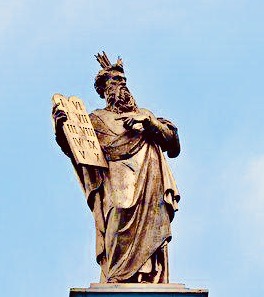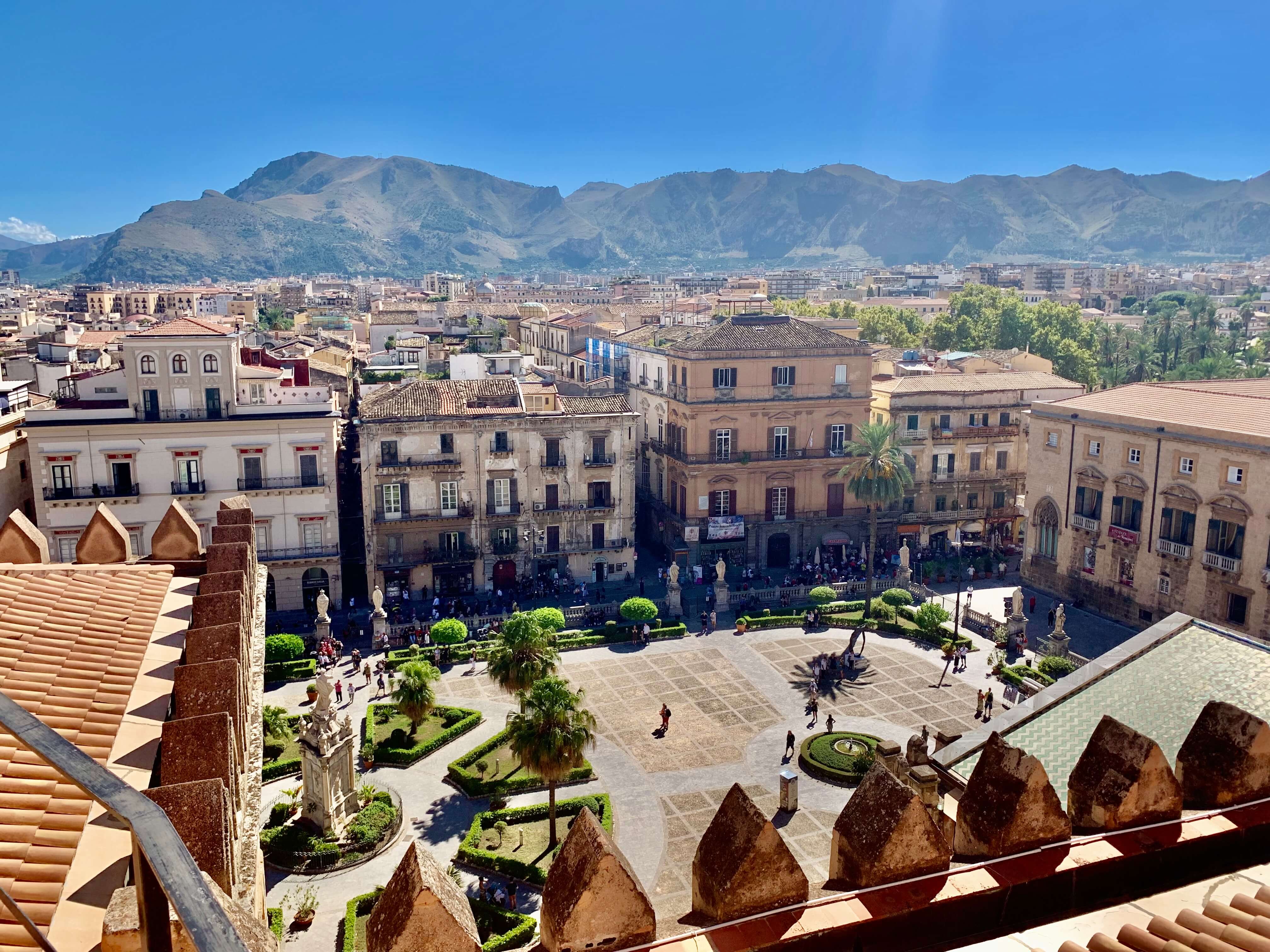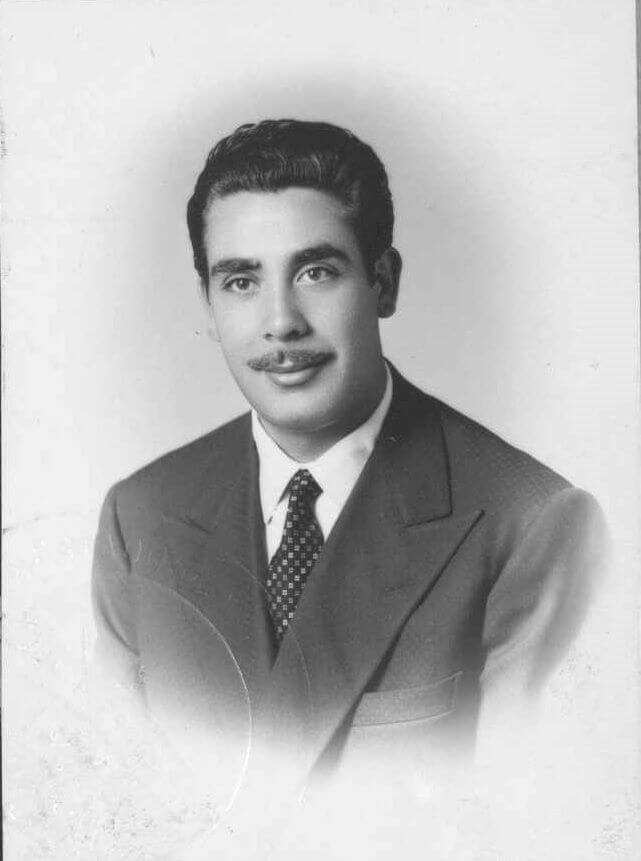- Home
- History of Sicily
- Norman Conquest of Sicily
The Norman Conquest of Sicily: An Epic Tale of Power, Intrigue, and Cultural Fusion
The Norman Conquest of Sicily is like an epic saga of power, intrigue, and cultural fusion that unfolds like a gripping movie.
Set against the backdrop of the 11th century, this extraordinary conquest was totally out of the ordinary. And because of it, for a moment, Sicily's future looked bright. Unfortunately, luck was not on the Normans' side in the long run.
Roger de Hauteville - also known as Roger I - was the Norman leader at the charge of the conquest of Sicily. Under his leadership, the Normans embarked on a bold expedition to seize control of the island.
Sicily was a strategically crucial cultural melting pot at the time. The Normans had to deal with this multicultural reality after the conquest, too.
The Arabs ruled the island but it also had a solid Jewish and even greater Byzantine population.
Here, we briefly go through the captivating events and key figures that shaped the Norman Conquest of Sicily and forever left their mark on Sicilian culture.
Sicily Before the Normans
Even before the Norman Conquest of Sicily, the island was of rich diversity and strategic importance in the Mediterranean. At this point, it had been under Arab rule for over two centuries. The Arabs were the cream of the crop when it came to sciences in the Middle Ages. So there was a pretty sophisticated Muslim society flourishing on the island.
The Arabs had indelibly impacted Sicilian culture, architecture, and agriculture, profoundly shaping the island's identity. Concurrently, the Byzantine Greeks also held sway over parts of Sicily, adding another layer of complexity to the island's political landscape. This intricate tapestry of cultures set the stage for the dramatic events unfolding during the Norman Conquest.
 The Muslim world was a center of science in the Middle Ages. The picture shows Muslim scholars gathering in the library.
The Muslim world was a center of science in the Middle Ages. The picture shows Muslim scholars gathering in the library.The power vacuum resulting from the fragmented rule of various Muslim factions created an opportunity. The Normans, under the leadership of Roger I, were quick to exploit it.
Roger and his men were originally of Viking descent but were now deeply entrenched in Southern Italy. The pope had promised them Sicily if they were to take it. Conquering it would enhance their territorial holdings and elevate their status in the Mediterranean.
Thus, the stage was set for a clash of civilizations that would reverberate through the history.
Rise of the Normans in Southern Italy
By the time the Normans reached southern Italy, the Viking Age was already behind them—though not far behind. They had transformed themselves from illiterate barbarians into civilized Christians in about a hundred years. By nature, they were cunning and energetic, halfway between a savage barbarian and a civilized European.
The Normans also reproduced efficiently, which led to overpopulation and meant they needed to find new places to live. One popular way to reach new areas was through pilgrimages. On their way to Jerusalem, the Normans usually stopped at Monte Sant'Angelo in southern Italy. There, their patron saint, the archangel Michael, had appeared to a local farmer in 493.
Arriving there shortly before 1000 AD, the Norman pilgrims met a Lombard nobleman by chance. He recognized the potential of the northern warriors. He asked them to help the Lombards to drive the Byzantine invaders out of southern Italy. The nobleman concluded that if the descendants of the Vikings and the Lombards joined forces, the Greeks wouldn't stand a chance.
The Normans were natural warriors and constantly sought new lands for their people. Here, they were offered rich and fertile land as a reward for a bit of fighting. So they returned north for weapons, promising to return with more men a year later.
However, when the Normans returned, they were not too particular about whose side they were fighting on. In the west, they worked as mercenaries for the Lombards; in the east, they fought for the Byzantines. Remarkably, their men always managed to be on the winning side. Gradually, the Normans became the most powerful army in southern Italy.
 The Battle of Cerami was a significant victory as Roger I led his men to conquer Sicily. (Painting by Prosper Lafaye)
The Battle of Cerami was a significant victory as Roger I led his men to conquer Sicily. (Painting by Prosper Lafaye)The Normans Arrive in Sicily
As the Normans warred in southern Italy, the Arabs of North Africa held power over Sicily. They engaged in piracy against cities on the Italian mainland. The Normans were sent to solve this problem. This was also a way of getting rid of the Norman soldiers loitering around southern Italy with nothing better to do.
The Muslim regime in Sicily suffered from internal power struggles, contributing to the Norman conquest of the island. Nevertheless, it took the Normans some thirty years to gain control of the island. Palermo was reasonably easy to conquer, but Enna, in central Sicily, was built on a challenging mountain. By 1072, however, the Normans had conquered the whole island.
Cultural Fusion and Integration During the Norman Rule
The Norman Kingdom can be considered Sicily's golden age. Even today, many festivals on the island celebrate their arrival. The Norman rulers, aware of the need to accommodate Sicily's diverse religious and ethnic communities, adopted a policy of religious tolerance and cultural exchange. This way, they wisely fostered a spirit of cooperation and coexistence among the island's inhabitants.
Historian Julius Norwich compares Norman Sicily to modern multicultural states such as the United States, Canada, and Australia. The difference is that governing this way was utterly unknown in the Middle Ages. In fact, at the same time as multicultural Sicily came into existence, the same ethnic groups were slaughtering each other elsewhere in Europe, in the Crusades.
The Normans based their government on the Muslim civilization. Arabic also remained the language of government. Jews, Muslims, and Byzantines were left to practice their own religions and have their own separate but equal laws. The Normans themselves brought a functioning legal system, universal literacy, and freedom of speech to Sicily.
Key Figures and Leaders of the Norman Conquest of Sicily
The Norman reign lasted through four rulers: two Rogers and two Williams. After that, the Norman influence gave way to that of European kings. Of these four, Roger I and Roger II are particularly noteworthy.
Roger I must be credited with conquering Sicily from the Arabs and laying the foundations for the future Norman kingdom. He understood the importance of unity: if the island was to be ruled peacefully, its inhabitants had to be given equal rights. In a place as inherently multicultural as Sicily, this was paramount.
Thus, even the Muslims who initially fought against the Normans were allowed to live in peace. They had the right to their religion and to Arabic, which became an official language alongside Latin, Greek, and French. (The Normans spoke French.)
However, Roger I died before the Kingdom of Sicily became fully established. His son, Roger II, succeeded him. He became the first official king of Sicily in 1130.
 Religion played a major role in the Norman conquest of Sicily. They considered themselves to be in the cause of Christianity. In this mosaic from Martorana Church in Palermo, Christ himself crowns Roger II as the King of Sicily.
Religion played a major role in the Norman conquest of Sicily. They considered themselves to be in the cause of Christianity. In this mosaic from Martorana Church in Palermo, Christ himself crowns Roger II as the King of Sicily.Roger II's mother was Italian, and he was brought up by Arab and Greek teachers. Norwich describes Roger II as an oriental ruler rather than a Norman warrior.
Roger II spent his youth in warfare. As he grew up, he turned his energies to his diplomatic skills. Under Roger II, each culture living on the island was given tasks that were natural to it. The Greeks were allowed to concentrate on shipping, while the Arabs dominated monetary affairs. This cooperation between the different factions also allowed architecture to flourish.
Roger II's permanent guests in Palermo were a cast of the most distinguished scholars of his time. Philosophers, geographers, and mathematicians from both the Christian and Arab worlds came to discuss matters with the king.
Sicily was a lively and cosmopolitan place at the time. Roger took advantage of this by interviewing sailors arriving at the island's ports. He was interested in knowing the places they had visited.
Roger aimed to compile a comprehensive book about the world and its places. The book, The Book of Roger, was completed just before his death. In it, Roger announced, among other things, that the earth was round—three and a half hundred years before Columbus.
Roger died in 1154 at 58, and his son, William I, did not live up to his father. This is reflected in his surname, William the Bad. William's son, William II, did a better job keeping his bread. Sadly, he died young, with no heirs.
After William II, control of Sicily passed to the royal families of Europe. The capital was changed from Palermo to Naples. The final seal on Sicily's displacement was the discovery of America. The world's attention turned elsewhere, and the role of the Mediterranean in world politics diminished.
 Norman Palace in Palermo. (Photo: archeologo / Wikimedia Commons)
Norman Palace in Palermo. (Photo: archeologo / Wikimedia Commons)Conclusion: The lasting significance of the Norman Conquest of Sicily
The Norman conquest of Sicily was the island's golden age. Its traces can still be seen today in culture, architecture, and cuisine.
The pity for Sicily was that the Norman kingdom existed briefly. If it had had time to establish itself, the future of the whole island might have been very different.
Norman traces can be found mainly in Palermo, the island's capital. There, you will see, among other things, the Norman Castle and the adjacent Palatine Chapel. Near Palermo are also the Cathedral of Monreale and the Cathedral of Cefalu.
All these are potent reminders of what can be achieved through cooperation between different cultures.
(This page last edited: March 24, 2025)
Recent Articles
-
Sicilian Food - Rich Flavors, Endless Passion
Apr 09, 25 09:54 AM
All you need to know about Sicilian food, its ingredients and history. -
Things to Do in Palermo - Tips for a Perfect Holiday
Apr 05, 25 04:27 AM
Things to Do in Palermo - From historic landmarks to delicious food, this guide has it all. -
The Story of Tommaso Buscetta: From Mafia Boss to Key Witness
Mar 30, 25 05:12 AM
Tommaso Buscetta built Sicilian Mafia into a global empire - which he then destroyed.
Follow MANY FACES OF SICILY on Facebook, Instagram, Bluesky & Pinterest
Contact: vesa@manyfacesofsicily.com





